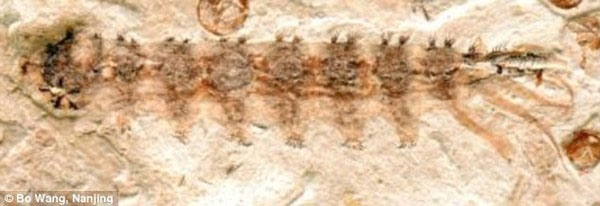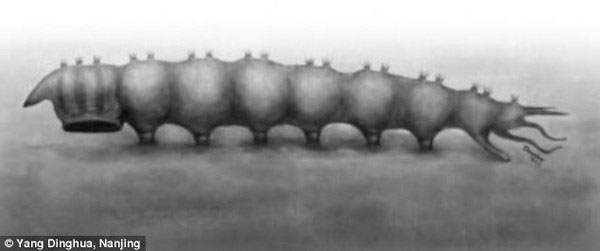Detection of giant blood-sucking parasite fossils
This blood-sucking parasite of 165 million-year-old salamanders has huge "sucking feet".
A group of scientific researchers recently discovered fossils of a strange 165 million-year-old parasite in a freshwater lake in Inner Mongolia, China.
Through research, experts discovered that this parasite could crawl into amphibian bodies (salamanders), using their "sucking legs" to adhere to the host's skin, then suck. blood.

Fossil parasite Qiyia jurassica.
The parasite species is about 2cm long and has the scientific name Qiyia jurassica ("Qiyia" means bizarre in Chinese, "Jurassica" is Jurassic) which is now known as one of the special species of sucking feet. giant.
Professor Jes Rust from the Institute of Geological, Mineral and Antique Biology at the University of Bonn said: "So far, no known parasitic species has such huge footprints."

Photo reconstruction of Qiyia jurassica.
Researcher Dr. Bo Wang said that although scientists found about 300,000 fossils of different species, they were also quite surprised by the new discovery."There are no other organisms that have similar body shapes to compare," said Dr.
More specifically, the experts were surprised to find no fossil fish in China's freshwater lake during the Jurassic period.

This anomaly is explained by experts that parasites can ignore fish and look for salamanders.
Dr Wappler also said: "A parasite sometimes kills its host when it reaches its goal." Currently, scientists are still studying to find out more about how Qiyia jurassica has maintained her life.
- The fossil mosquito is 46 million years old
- The species of blood-sucking plants
- This photo is ravishing until you take a closer look to see a horror truth
- Discover the secret of the giant ancient louse
- Alarm on 'new HIV' in America
- Dengue virus makes the blood thirstier
- Things to know about kissing bugs
- Video: The hair of the nape of a mosquito's blood sucking
- Vampire monsters specializing in sucking blood are captured
- Blood sucking creatures appear in tuna boxes
- Blood sucking bugs contain parasites and drug resistance
- The 'demons' suck the blood of scary people
 Discovered an ancient centipede fossil 99 million years old
Discovered an ancient centipede fossil 99 million years old Discovered bat-like dinosaurs in China
Discovered bat-like dinosaurs in China Discovered a 200-year-old bronze cannon of the coast
Discovered a 200-year-old bronze cannon of the coast Discover 305 million-year-old spider fossils
Discover 305 million-year-old spider fossils